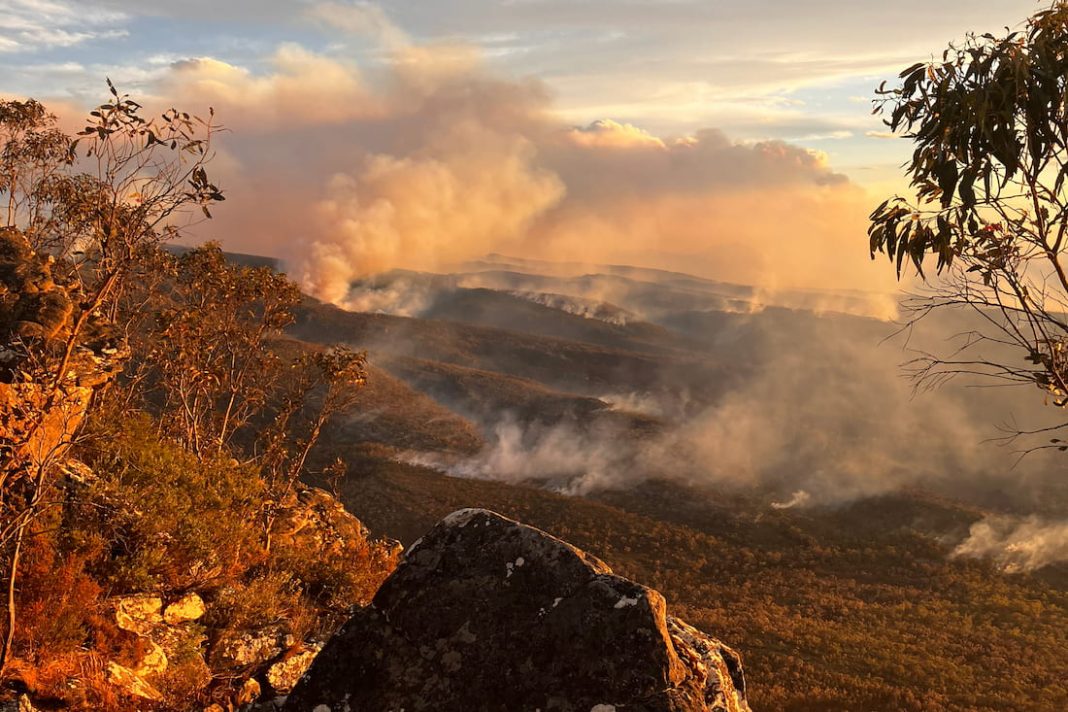A bushfire raging for 21 days is finally contained, thanks to a cool change and rain bringing welcome relief for emergency crews.
The fire began on December 17 after dry lightning started multiple fires in the southern part of the Grampians National Park, in Victoria’s north east.
On Monday, Incident Controller Peter West said while the fire was controlled, firefighters would patrol the area for weeks as they monitor the blaze and attend to any flare-ups.
“Coinciding with what is typically the busiest season for tourism in the area, the fire has resulted in considerable hardships and financial losses for local businesses and communities,” Mr West said on Monday.
“Declaring the fire contained allows us to begin the process of reopening Halls Gap and areas of the national park.”
After a three-day heatwave that sent the mercury above 40C in parts of Victoria, scattered showers were expected across Monday.
Some of those showers had dumped 10mm of rain on the Grampians fireground by 9am on Monday, with as much as 25mm predicted.
A moderate risk rating remains in place following days of extreme and high fire danger.
Firefighters battled blazes in the Central Goldfields region near Maryborough and at Moliagul, west of Bendigo, on Sunday, but were able to get the flames under control.
A watch and act warning remains in place for the Grampians fire, but residents are allowed to return to their properties with caution.
Heatwave warnings remain in northern WA, northeast South Australia, and parts of northern NSW on Monday.
A high fire danger is forecast in Sydney and surrounding areas with temperatures expected to approach 40C in the city’s west on Monday, meaning residents should be ready to act in the event of fires.
Similar danger is forecast in the state’s central west, southern ranges and northwestern regions.
Residents were advised to monitor conditions with a number of fires burning in Muswellbrook and other parts of the NSW Hunter region.
GRAMPIANS FIRE BY THE NUMBERS:
* Started by dry lightning, burning for 21 days before it was declared contained
* Fire footprint circumference of 422 kilometres
* More than 76,000 hectares of national park and agricultural land burned
* Four residential properties in Moyston and Mafeking destroyed along with 40 outbuildings in Moyston, Willaura, Willaura North, Mafeking, Pomonal, Glenthompson and Mirranatwa
* Preliminary livestock losses include 775 sheep, one horse, one beef cattle and 1285 beehives
* More than 13,538 ha of farmland, including 10,053 ha of pasture was burnt, and 540km of fencing was damaged.
Source: State Control Centre



